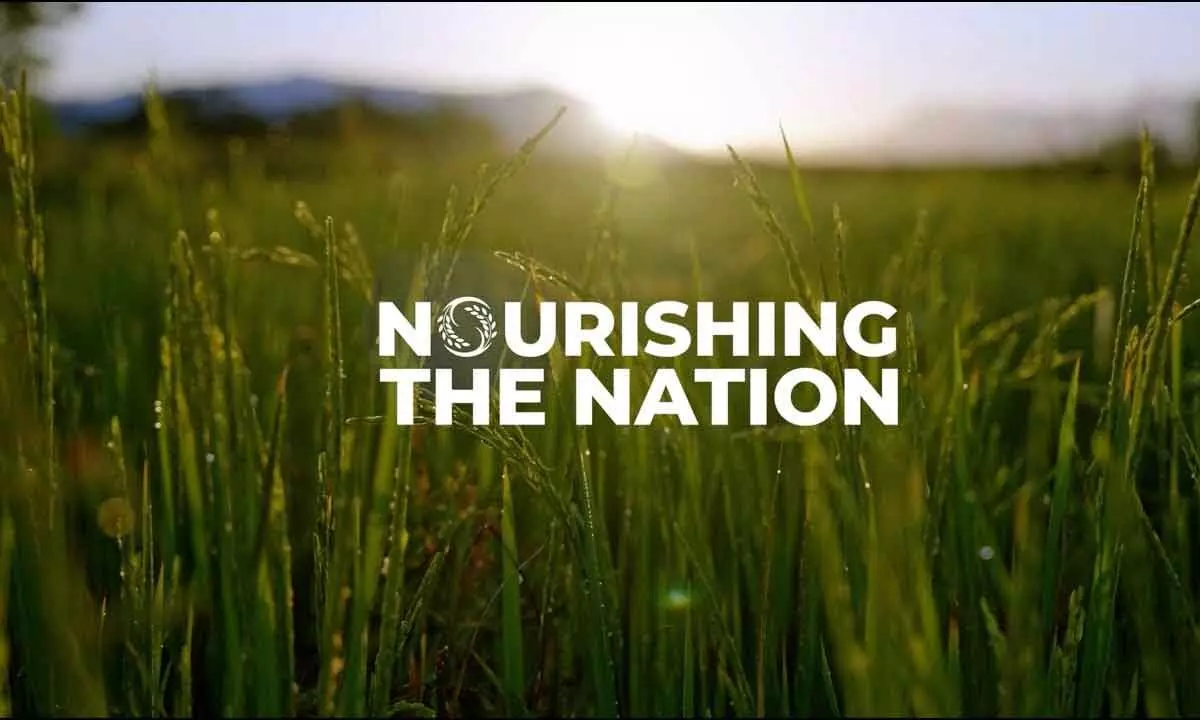Live
- Formula 1: Russell pips Sainz to take pole in Las Vegas GP
- People voted for ideology, rejected dynasty: Sudhanshu Trivedi on Maha victory
- AP, Telangana to receive rains for next three days as low pressure to turn depression
- Kailash Gahlot inducted into BJP’s Delhi election panel
- With state elections over, Indian stock market heads for stability
- Mahayuti's Ladki Bahin Brahmastra demolishes MVA in Maharashtra
- Actor and Youth Ambassador Darasing Khurana Highlights Mental Health Issues with Singapore PM
- Heavy FII selling in India to taper off soon, say market watchers
- Esports Mania Grips India: What are the Trends Fueling this Growth?
- AI-Powered CRM: Shaping the Future of Customer Relationship Management
Just In
Nourishing the nation must top policy priorities


Ahead of the General Elections notification, the Modi government has received good tidings from an international organisation. It has improved ranking...
Ahead of the General Elections notification, the Modi government has received good tidings from an international organisation. It has improved ranking in Human Development Index (HDI), a global UN measure of well-being and quality of citizens. The HDI is an index is based on 3 parameters – life expectancy, mean years of schooling and average incomes. In contrast, the gross domestic product (GDP) only weighs incomes or output in an economy. The world’s fifth-largest economy has been ranked 134 out of 193 countries, as compared to 135 out of 192 countries in 2021. It has moved up the index scale from 0.633 to 0.644 in 2022. The HDI declined from 0.645 in 2020 to 0.633 in 2021, primarily due to a drop in life expectancy.
India’s story is shining in the overall picture of the world that while recovering from the pandemic’s shocks is eclipsed by wars and conflicts. “Uneven progress is leaving the poorest behind, exacerbating inequality, and stoking political polarization on a global scale. The result is a dangerous gridlock that must be urgently tackled through collective action,” the UN report says, cautioning the nations that inequality across the world is rising again. However, “India has shown remarkable progress in human development over the years. But there is room for improvement. With a renewed focus on women-led development, India can further unlock socio-economic progress, paving the way for a brighter and more equitable future for all,” according to a statement from Caitlin Wiesen, the resident representative of United Nations Development Programme (India).
Though, it feels good that the one billion-strong nation is improving its HDI score, it is not satisfactory for the world’s fifth largest and $5 trillion economy which is raring to be the third largest economy by 2027, surpassing Japan and Germany. It is still stuck among those in the medium human development category, and lags Bangladesh (129th), Bhutan (125th), Sri Lanka (78th) and China (75th) in the neighbourhood. It’s high time for a shift in policy priorities to achieve real human development at the grassroots, in terms of health, education and social development. Not that there are no policies at all, targeting uplift on these factors, but they are not being implemented well, benefiting the targeted sections across the country, especially in remote parts.
Economic disadvantages of certain sections need to be better focussed, for they mainly contribute to its low HDI rank. It is in social infrastructure such as education and health that India is lagging behind. According to the World Poverty Clock, less than 3% of India’s population live in extreme poverty now. Cheer the numbers. Yet, living conditions continue to be so worrisome for the poor that the government lowered the prices by Rs 2 per litre both for petrol and diesel. The government, which for long resisted demands to pass on unprecedented cuts in international fuel prices to the people, had to think of providing some solace to the public. Cereal inflation continues to be a challenge. The price of LPG in 2014 was about Rs 414 and is now hovering over Rs 900. The long spell of food inflation has prompted the Centre to extend the free food grain scheme for another 5 years, benefiting 81.3 crore poor with 5 kg food grains a month. A point to ponder is India is yet to set a target to eradicate malnutrition within the foreseeable future. The 2019–2021 National Family Health Survey (NFHS-5) shows slight improvements in child nutrition levels. However, the government recently admitted over 33 lakh children are malnourished and more than half are in the severely malnourished category with Maharashtra, Bihar and Gujarat topping the list. It is imperative to address rural unemployment and farm stress as well.

© 2024 Hyderabad Media House Limited/The Hans India. All rights reserved. Powered by hocalwire.com






